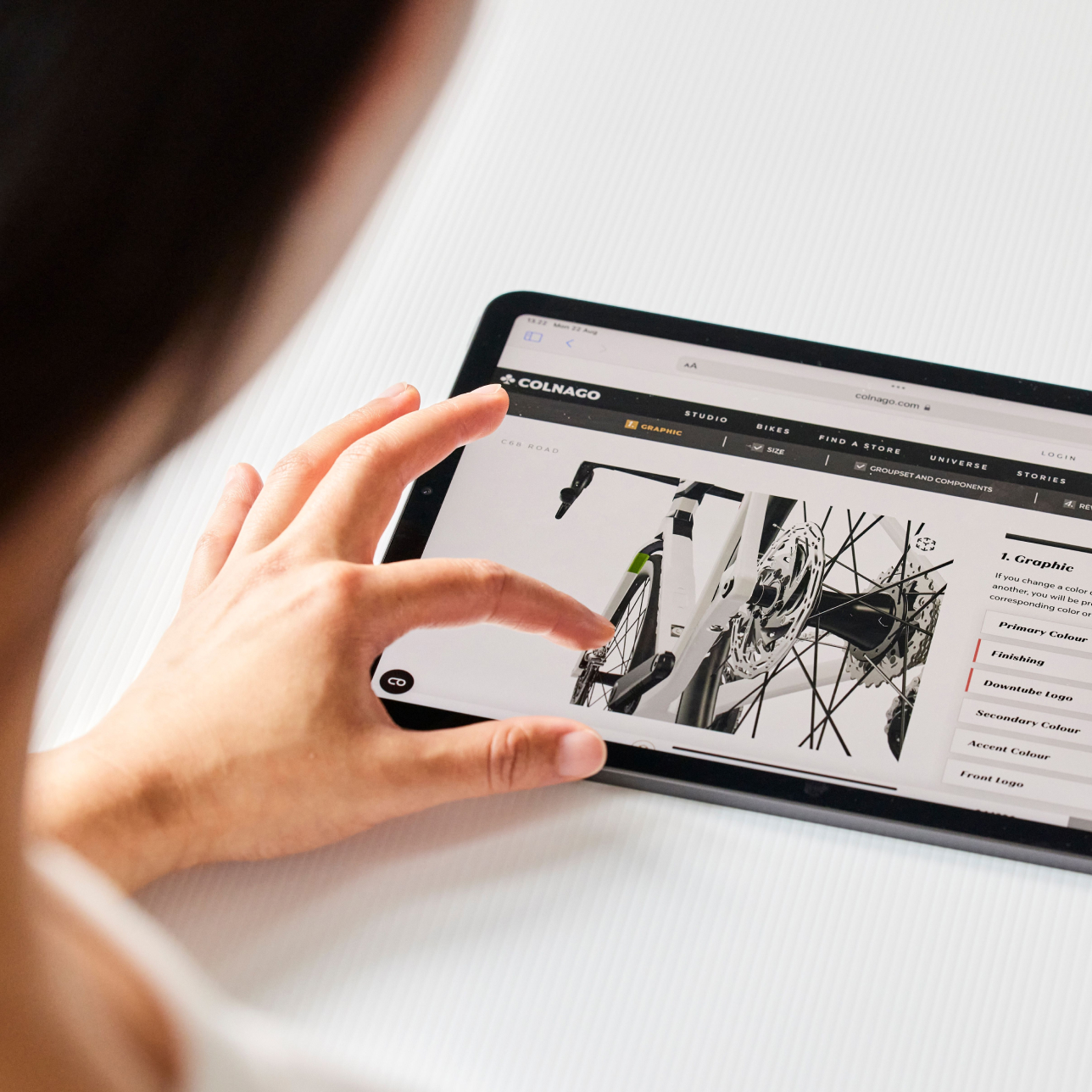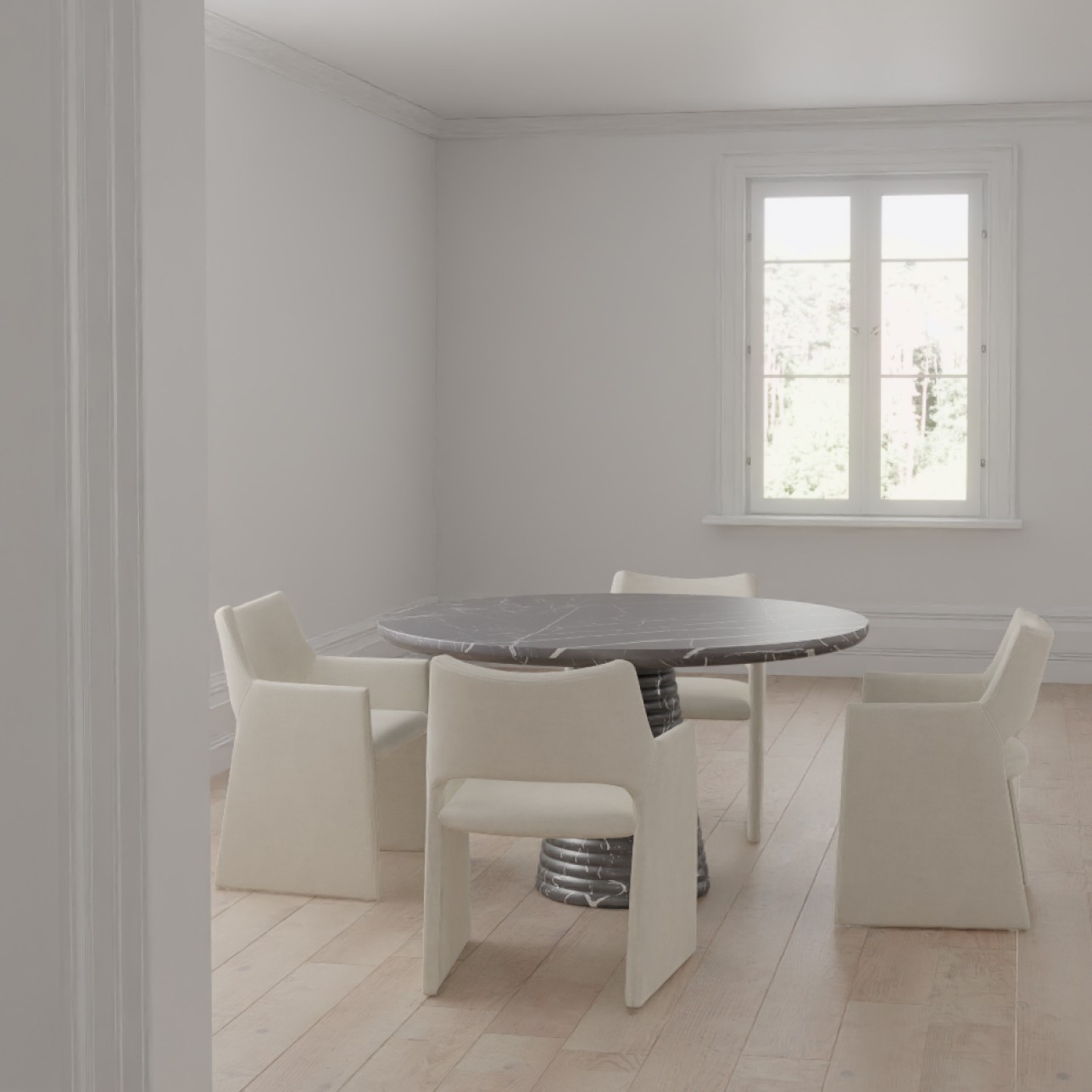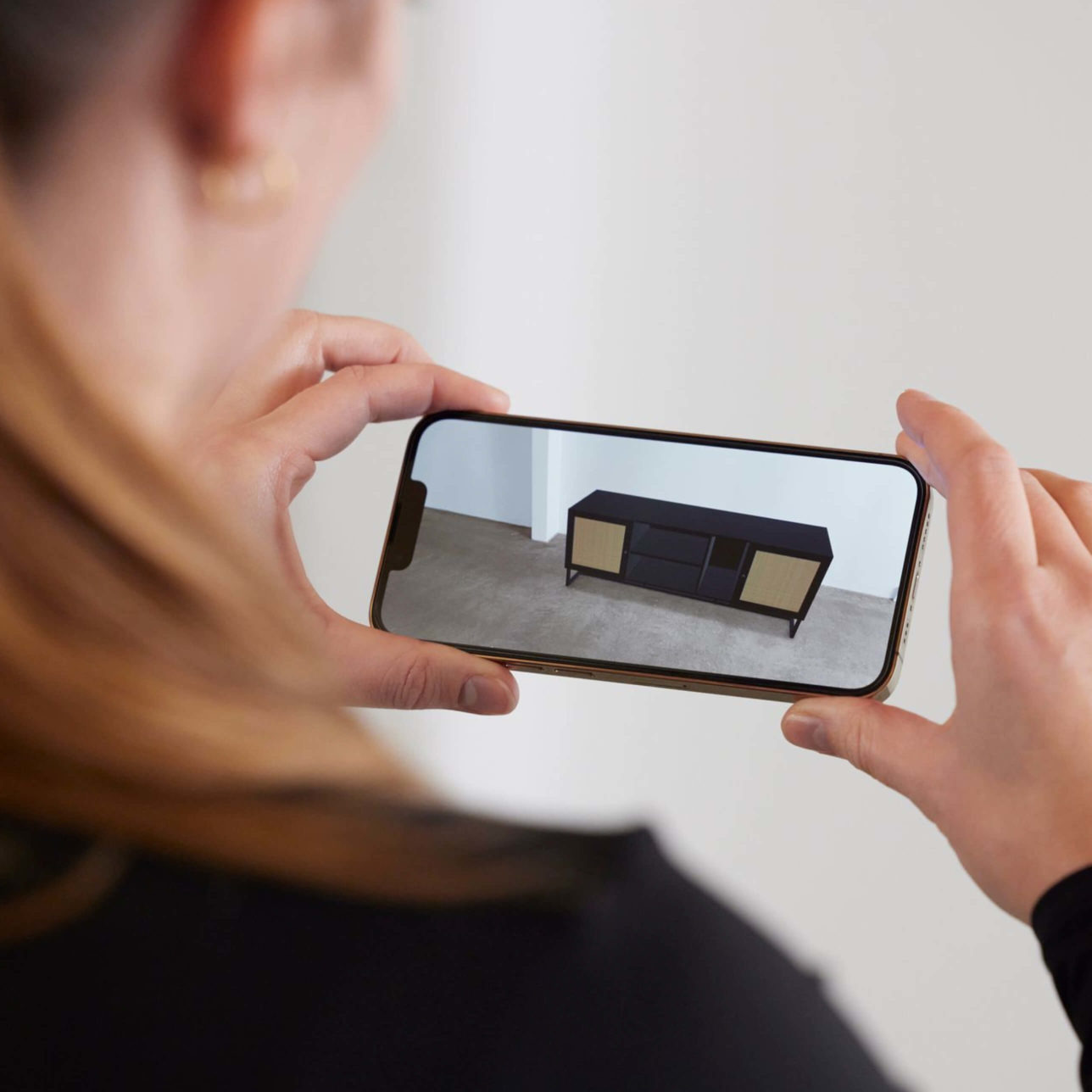3D Car Customization: an introductory guide for automotive brands in 2025
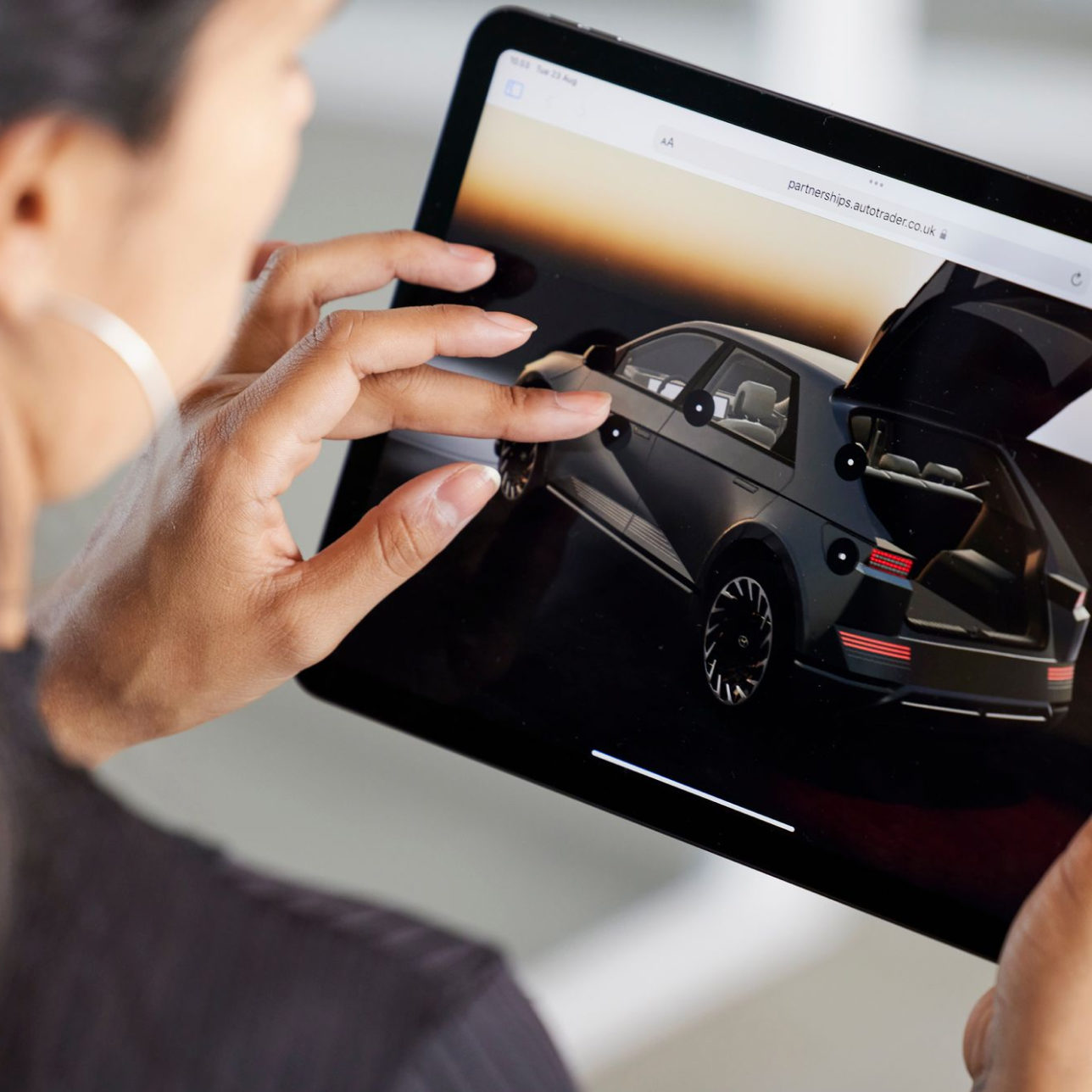
It’s mid-2025 and, by the time you’re reading this, we are likely closer to the year 2050 than we are to 2000.
In this time, the car buying process has come a long way – from flicking through brochures or walking past rows of near identical vehicles at the showroom. Today, buyers want to experience what they’re getting. And increasingly, that experience starts long before they step onto the lot.
Enter 3D car customization – an interactive, digital-first approach that lets prospective car buyers explore and personalize every detail of a vehicle. It’s immersive, intuitive and proving to be a game-changer in how cars are marketed, sold and even manufactured.
So, what exactly is 3D car customization? How does it work? And what makes it such a valuable tool for automotive brands right now?
Let’s break it down.
What is 3D car customization?
At its core, 3D car customization is the process of using 3D product rendering and real-time configuration tools to let customers visually personalize a 3D represenation of a vehicle.
That means instead of flicking through multiple product images or reading a list of options to understand how a car may be configured, prospective buyers can interact with and customize a fully rendered, photorealistic digital model of it.
This technology combines 3D visual assets with a real-time 3D product configurator that updates the car’s appearance based on user selections of customizable features from color and wheels to trim and interior finishes.
“Customization and visualization are very important in the automotive industry as they give manufacturers the ability to satisfy the myriad tastes and preferences of their customers. 74% of those surveyed thought that personalized experiences would affect their next car purchase, and personalized offers are crucial to help drive both customer retention and acquisition.”
– Rob Dillan, Founder, EVhype.com
Primary benefits of 3D car customization for automotive brands
3D customization isn’t a gimmick, it can solve real problems for car manufacturers, dealerships and customers. Here are five of the most impactful benefits:
1. It enhances the customer experience
Buyers want to be confident in their purchasing decisions, especially when buying something as costly as a new car. 3D customization helps bridge the gap between imagination and reality by showing exactly what their chosen features will look like.
When you consider that 54% of car buyers would pay more for a better buying experience, offering immersive 3D customization is a smart way to attract and convert today’s experience-driven customers.
2. It boosts conversions and engagement
Interactive content typically outperforms static visuals when it comes to keeping users engaged. A survey conducted by The Harris Poll found that 60% of online shoppers say they’re more likely to buy a product if it’s shown in 3D or AR.
For car brands, this translates to more pre-orders, fewer returns and greater interest in upgrades and accessories.
3. It reduces the need for physical inventory
Rather than showcasing every possible combination in the showroom, brochure or online catalog (which is very inefficient and, more likely, impossible), dealers can use 3D car customization to display any variant virtually and in lifelike detail.
That’s a huge advantage for brands offering extensive auto personalization but don’t want the added costs and waste of physical inventory.
4. It speeds up the buying process
With 76% of car buyers beginning their search online, 3D car customization helps them visualize, personalize and finalize their choices much earlier in the sales journey. By the time auto shoppers contact a dealer, they’ve already visualized their ideal car using a 3D configurator and/or AR visualization. This makes the transition from research to purchase much faster and more buyer-friendly.
As a result, prospective car buyers typically arrive at the dealership with greater clarity or skip the visit entirely and simply buy online, leading to faster transactions and a leaner sales process.
5. It lowers returns and post-purchase friction
Shopify’s data shows a 40% decrease in returns for businesses using 3D and AR tools. With high fidelity, lifelike 3D visuals and the ability to place the customized car in real-world environments with AR, buyers know exactly what they’re getting.
This engaging combination of digital preview and physical product reduces return rates and boosts customer satisfaction, crucial for brand loyalty and repeat custom.
“3D car customization is about more than just cool design – it’s a game changer when it comes to the production and sale of vehicles. One significant advantage? Waste reduction. Rather than creating actual prototypes, companies can make and iterate upon them digitally, conserving time, money and materials.”
– Alice Coleman, Head of Public Relations, Auto Expert, EpicVIN
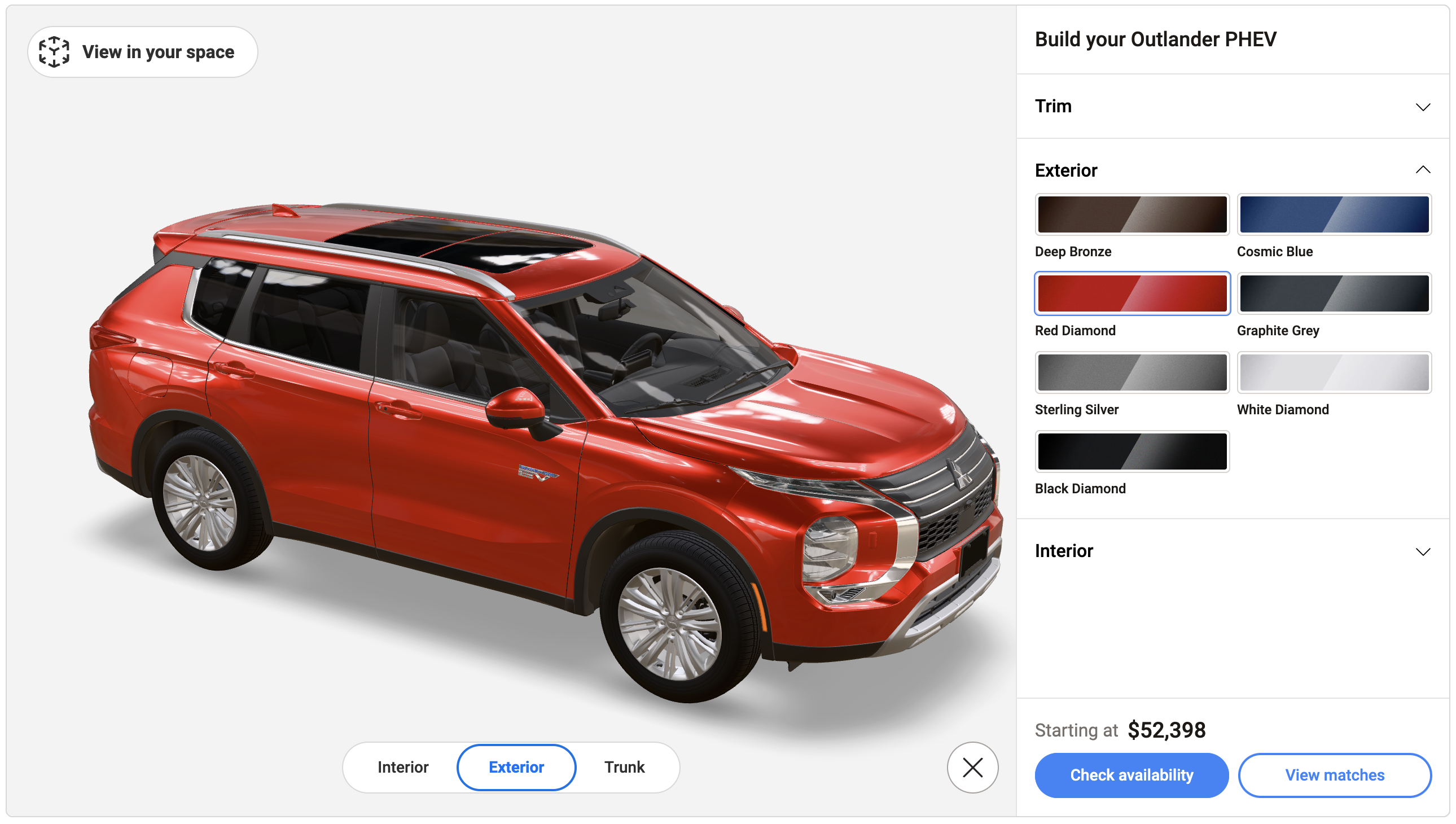
Some lesser-known benefits of 3D customization for automotives
Some of the most exciting advantages of 3D car customization go beyond the showroom floor. Here are a few less obvious ways automotive brands are capitalizing on it:
- Smarter Product Planning – OEMs can test interest in different automotive trims, colors and features based on user engagement data before committing to production, helping to reduce overstock and streamline supply chains.
- Personalization in Marketing – dynamic 3D renders of customized cars can be integrated into email campaigns or retargeting ads, showing customers the exact configuration they explored earlier.
- Training & Enablement – sales and support staff can use tools such as 3D configurators and AR for faster onboarding and better product explanations, especially as vehicles become more tech-heavy and modular.
- Data-Driven Design – 3D customization analytics can shed light on customer preferences at scale, informing future car model designs or identifying trends across regions.
“Having built AI systems that analyze user behavior patterns for nonprofits, I see 3D car customization’s hidden goldmine: predictive donor profiling through modification choices. When someone customizes a $80k Tesla with premium features, that data becomes incredibly valuable for luxury nonprofits and cause marketing.
The most fascinating application I’ve implemented is using 3D customization data to trigger automated donation campaigns. We tracked clients who spent on eco-friendly vehicle modifications and automatically served them environmental cause ads, resulting in 340% higher conversion rates than generic targeting.”
– Mahir Iskender, Founder, KNDR

The 3D car customization experience from the customer’s perspective
Put yourself in the shoes of a prospective car buyer. You visit a car brand’s website because you’re interested in their latest SUV model. Instead of browsing through dozens of static images or flipping between dropdown menus, you land on a product page that’s instantly engaging.
Here’s what the experience can look like for today’s digital car shopper:
Step 1: You see the car in 3D – not just a flat image
A high-quality, photorealistic 3D model of the vehicle appears on your screen. It’s rotating slowly, inviting you to explore. You can zoom in, rotate and inspect every angle. With 360-degree spin, exploded views and informative hotspots, 3D visualization lets you explore the car in more depth and with more context than a traditional showroom ever could.
Step 2: You choose the customizations – see changes in real-time
As you click through the available modifications – such as exterior paint, wheel styles and roof type – the virtual car updates in real-time. No lag, no page reloads. You’re in total control of how your ideal car looks.
Step 3: You step inside the interior
Clicking “interior view” flips the perspective. Now you’re inside the car, personalizing details such as upholstery, dashboard materials and even ambient lighting themes. It’s engaging and immersive and you can see how each part affects the whole.
Step 4: You see pricing and package options update live
As you configure and personalize, package pricing and upgrade details adjust on the fly and in real-time. Whether you choose electrochromic windows or real wood inlays, you always know the cost so there are no surprises at checkout.
Step 5: You save, share or take it to the dealership
Finished customizing? You can save the configuration, email it to yourself or share it with a salesperson. The beauty of a 3D model is that you can bring your ideal car to a dealership virtually and then pick up right where you left off, streamlining the experience from screen to showroom.
This seamless, self-guided interaction helps buyers feel ownership earlier in the buyer journey, boosting engagement, reducing confusion and ultimately increasing conversion rates.
Real-world use cases of 3D car customization in 2025
Today’s top car brands are wasting no time capitalizing on the results driven by 3D car customization. Many are already using this technology to drive engagement, improve efficiency and nurture brand loyalty.
Here are some standout use cases in action:
🔧 Build-Your-Own Configurators
As we’ve already discussed, these tools allow shoppers to explore, configure and visualize vehicles on their own terms before ever stepping into a dealership. They’re becoming essential to modern auto shopper journeys, especially for the growing number of consumers who expect digital-first experiences.
Example: AutoTrader Canada
AutoTrader Canada’s 3D configurator – powered by London Dynamics – delivered a more immersive shopping experience, which lead to a 2.5x increase in engagement and significantly longer session times on listings with interactive 3D visuals.
🛍️ Virtual Showrooms
3D product visualization allows brands to launch vehicles without physical showrooms or events, which is especially helpful for online-first or global rollouts.
Example: Lucid Motors Virtual Studio
Lucid’s virtual car showroom allows customers to design their Lucid Air online in full 3D. Every visual change updates dynamically, creating a premium experience without needing a physical showroom visit.
📱 Mobile AR Experiences
A growing number of automotive brands are combining 3D with AR to let users visualize their customized cars in real-world environments. With browser-based AR systems, they can do this right from their mobile devices.
Example: Renault Megane
London Dynamics’ 3D configurator lets users project a life-sized, true to scale Renault Megane E-Tech EV into their driveway using just their smartphone. Customers can walk around the car and explore features as if it’s physically in front of them.
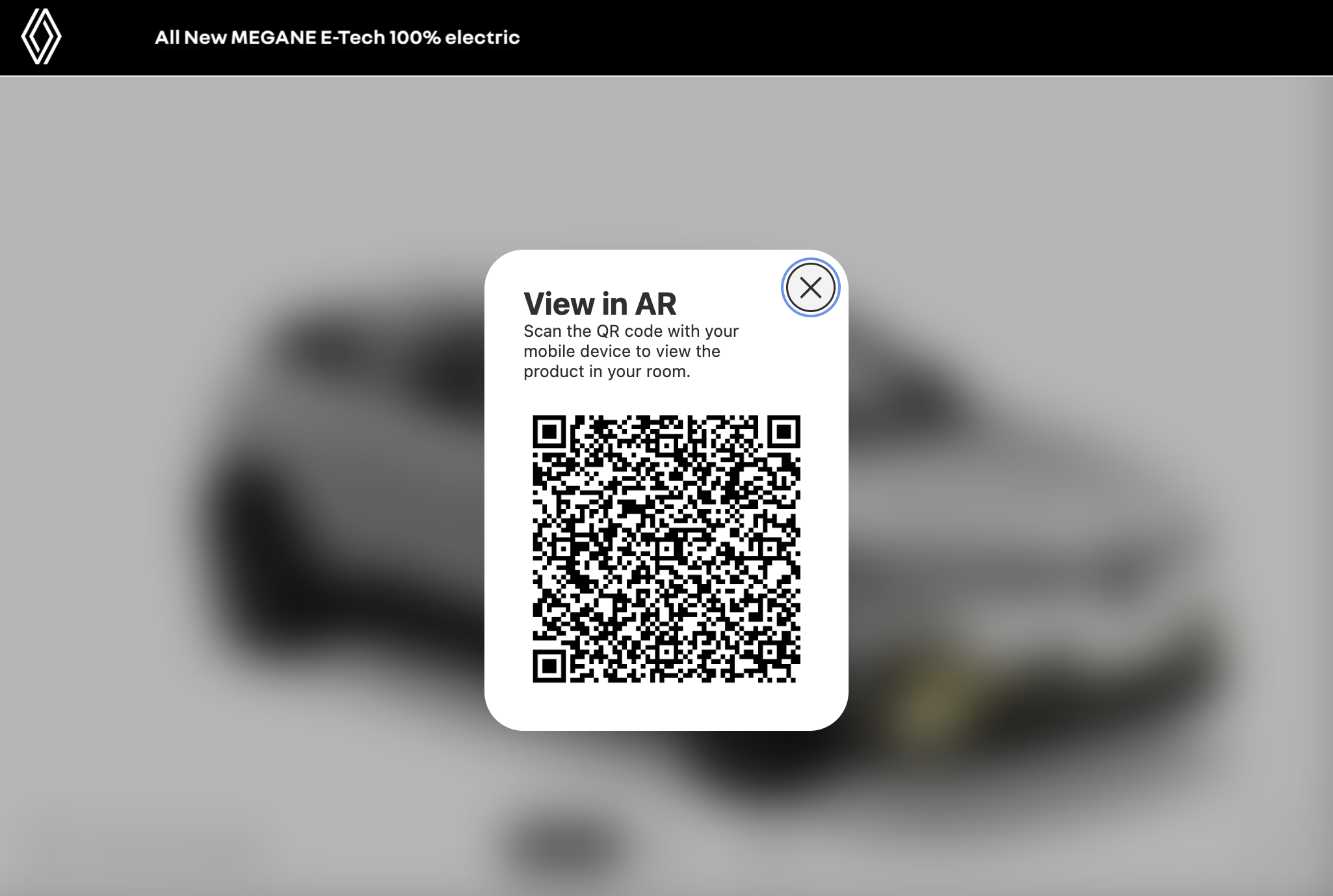
Scan this QR code and see a lifelike AR Renault Megane in your space.
Final Thoughts: is it time you rethink your car buying experience?
According to Cox Automotive, car buyers visit an average of 4.2 websites in their purchasing process, often comparing models, pricing and features across multiple brands and platforms.
That means standing out visually – and delivering a more immersive, personalized experience – is no longer optional for automotive brands. Shoppers expect clarity, interactivity and personalization. 3D product customizer software gives them exactly that, while also proving brands with the tools they need to increase engagement, streamline sales and reduce returns.
At London Dynamics, we help automotive brands bring their vehicles to life with interactive 3D rendering and configurator tools that drive engagement and streamline sales.
Want to elevate your car buying experience?
Get in touch with our team today to explore how we can you elevate your car buying experience.

Schedule a 30 minute introductory call with our team to learn more about the opportunities for your business.
Blog.
We’re working at the forefront of digital technology and believe in sharing knowledge within the industry to help elevate and unlock the power of 3D and AR.
